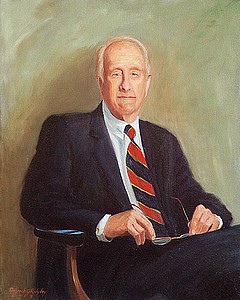 Deborah Ridgley recently finished her first public talk. It was for the unveiling of a portrait of her sister, who is a member of the Ohio House of Representative. The group numbered about 75, mostly supporters of her sister, but also a couple of museum and art school directors. I asked Deborah to respond to some of my questions about speaking in public for the first time.
Deborah Ridgley recently finished her first public talk. It was for the unveiling of a portrait of her sister, who is a member of the Ohio House of Representative. The group numbered about 75, mostly supporters of her sister, but also a couple of museum and art school directors. I asked Deborah to respond to some of my questions about speaking in public for the first time.
How much time did you have? I could have had all of the time I wanted. I chose to speak for about 5-10 minutes.
Were you nervous? If so, how did you try to overcome that? Yes, I was nervous, but I tried to talk with a smile to overcome that feeling, and before hand I met all of these people and spoke to them about my paintings.
What did you talk about? I began by telling them my feelings of being commissioned to paint Michele’s portrait. It was a combination of a family type portrait and a corporate portrait. I discussed that sometime the people you know the best are the hardest to capture on canvas. Then I made a joke of how she kept saying "she loved the painting, but please make me look younger." This made everyone laugh.
Then I went into the 10 highlights of Michele’s career so far: Mayor, City council, Important bills that she is passing. The focus was on her. The event was for her, not for me to discuss myself. Having the portraits around the room was enough of an advertisement.
How will you prepare differently next time? I prepared about a month in advance. I typed up many versions of the speech and had a few eyes look at it. I read and practiced in front of my family until they knew it by heart. Next time I will put the key points on note cards and NEVER read a speech or any part of it.
What do you wish you had known? I wish I would of know that what I sounded like under a microphone–very loud–and what to do when I lose my place in the speech.
What do you wish you had done differently? Next time I will ask the people at the location of the speech if I could go an hour ahead and practice on their microphone – so hearing my own words will not be so intimidating.
How did you promote your work during the talk? I really did not promote my work during my talk, I just had samples around the room. I did mention that "it is very normal for my adult portrait commissions to ask the artist to please make them look younger." But I felt this was not my place to talk about me.
Will you do it again? I will have to do this again, and I will probably add more stories about the process of painting a painting, and more about my relationship with the subject. What I wanted to portray in the painting. I will add more humor, because that really helps the jitters and makes the talk less boring.
Is there anything else you can share with artists who are getting ready for their first public talk? If this is your first talk, I only have 3 words for you:
Prepare, prepare, prepare. That will take a lot of the stress out of it. And not the night before the talk. Start at least one week ahead of time. The more time the better. Practice in front of a mirror. Practice if you lose your place on the cards or key points, and how you will handle that. Go to the room ahead of time. Hear your voice on the microphone. Greet the guest when they arrive. Talk to most of them. Focus on one person when you look out to audience. And have fun. Add humor. Talk normal, not like you are reading anything. That makes people listen and at ease.
All in all, speaking at this event made me feel like I was presenting myself like a professional in the field I am in. It was good advertising in itself. After the event, three people came up to me. One senator asked if I would paint his grandchildren, another man wants a posthumous of his father, and a director of an art school asked if I would consider a teaching position at her school, to teach painting. So far I have made contacts and follow ups with all of the above, so we will see if they will work out or not.
Image: Deborah Ridgley, Michelle G. Schneider, Ohio House Representative, 2006. Oil on canvas, 40 x 30 inches. (c) The Artist.



3 thoughts on “First-time Speaking Advice from Another Artist”
Alyson, on your recommendation I bought Lee Glickstein’s Be Heard Now! I got to read enough of it prior to last Saturday’s watercolor portrait demo to completely change my mind set. The feedback I received was amazing and heartwarming. I can honestly say I enjoyed the whole experience including prior to the demo when I would usually be nervous. I have a speech to give at the museum in June and will continue to read this book. The real meat of it starts about page 175. Already I feel more confident that I won’t be boring everyone. Have a great opening ready to go too! Thanks Alyson!
Nancy, that’s so great to hear! Please let me know how your museum talk goes.
Pingback: Mana Is the Magic Behind Selling Your Art — Art Biz Blog